Thorma Granada Handleiding
Bekijk gratis de handleiding van Thorma Granada (16 pagina’s), behorend tot de categorie Kachel. Deze gids werd als nuttig beoordeeld door 74 mensen en kreeg gemiddeld 4.5 sterren uit 37.5 reviews. Heb je een vraag over Thorma Granada of wil je andere gebruikers van dit product iets vragen? Stel een vraag
Pagina 1/16

ZARAGOZA, GRANADA
1
Installation and Operation Manual
solid fuel heater
ZARAGOZA, ZARAGOZA Plus, GRANADA
tested according to the standard EN 13240
1. Installation Instruction
The heater has been designed to allow simple connection to an existing chimney by a single connecting piece. The connecting
piece must be as short and straight as possible, in a horizontal position or slightly inclined. The piece must be tight.
Be sure that all local regulations, including those concerning both national and European standards on construction and fire
prevention, are respected during installation. Inform the competent inspector prior to installation. Be sure that combustion air supply
is sufficient; particularly in rooms where windows and doors are closed tight.
Chimney properties shall be calculated in accordance with DIN 4705 parts 1 and parts 2, eventually also part 3, with the three
values stated in this manual.
The heater must stand on a hearth with adequate bearing capacity. If bearing capacity is too low, adequate measures must be
taken (e.g. a board must be laid to split weight).
Into the heater can be mounted fireproof concrete stones which accumulate heat their ability to keep the heater warm surface many
hours after burning out of fuel. Examples of position of the stones are on page No. 16. Stones are marked with dark colour.
2. General Safety Instructions
Fuel combustion emits calorific energy that heats the surface of the heater, combustion chamber door, door and control elements
handles, safety glass, flue pipes, and eventually also the front of the heater. Do never touch those parts without adequate safety
wear or elements (fireproof gloves etc.).
Warn children of such danger and make sure they do not stay close to heater when in operation.
3. Acceptable Fuel
Fuels acceptable for burning include wood logs of up to 25 cm in length and 30 cm in circumference, and lignite briquettes.
Make sure that only air dried wood logs are used. Burning of waste, and plastics in particular, is forbidden by law on emissions.
Besides, such fuel may cause damage to the fire place and chimney and subsequently may injure health and smell may annoy your
neighbours. Air dried wood logs with 20% maximum humidity may be obtained after at least one year (soft wood) or two years (hard
wood) of drying.
Wood is not slow combustion fuel and thus, continuous heating throughout the night is not possible when burning wood.
Liquid fuel is unacceptable.
4. Firing
During the first firing bad smell due to drying of protection paint is inevitable but the smell shall fade quickly. Make sure the room
with the heater is well aerated when firing. Quick firing is essential because incorrect procedure may cause increased emissions.
Add more fuel as soon as firing fuel catches fire. Do never use alcohol, petrol or other flammable liquids for firing. Do always use
some paper, wood chips, and a small amount of fuel for that. Make sure that primary and secondary air is supplied to heater when
firing. Make sure that heater is under control during firing.
5. Operating More than One Fireplace
Make sure that combustion air supply is sufficient when operating more than one fireplace in one room or within the same air system.
6. Transition Season Operation
When exterior temperature rise during transition season draught can decrease at low burning capacity and flue gas may not be
evacuated completely. In such case add only small quantities of fuel and open the slider of primary air supply so that loaded fuel
burns more quickly (flame) and draught gets steady. Ash needs to be raked carefully more often to enhance air circulation below
fireplace.
7. Cleaning and Checking
Heater flue pipes need to be checked for deposit and eventually swept at least once a year or more often, e.g. while sweeping
chimney. Make sure your chimney is swept regularly by a chimneysweep. The frequency of sweeping shall be defined by
competent inspector. Heater should be checked by an expert every year. It is forbidden to clean the heater with a damp cloth.
8. Versions
Heaters with spring fireplace door can be connected to a chimney with multiple taking for other heaters and fireplaces provided that
dimensions of the chimney are in compliance with DIN 4705 part 3.
The door of the heater with spring fireplace door must always be closed during operation, except for firing, fuel charging, and ash
removing. Otherwise operation of other equipments connected to the chimney may be affected or flue gas may leak.
9. Combustion Air
Since heaters are fireplaces depending on surrounding air and take combustion air from the room, adequate intake of combustion
air is vital.
In rooms with tight windows and doors (e.g. as energy-saving measure) fresh air intake may be low and thus affect draught of the
heater. Also your well-being may be affected; even your safety may be threatened. It may sometimes be necessary to assure
adequate intake of fresh air e.g. by installing air shutter close to heater or by combustion air pipe leading to exterior or to a well
aerated room (except boiler room). In particular it is vital that combustion air pipes are open during operation of fireplace. Steam
GB

ZARAGOZA, GRANADA
2
flues located in the same room with fireplace may affect heater’s operation (smoke may leak to inhabited room despite closed
fireplace door) and therefore must never be operated parallely with the heater.
The outdoor combustion air could be supplied to the heater through the connecting socket which can be mounted on the bottom of
the backside of the heater.
10. Fire Protection
Distance from flammable structures and furniture
To assure adequate heat protection, a minimum distance of 15 cm in the back and 15 cm on the sides is required between the
heater and flammable structures and furniture.
Fire protection within radiation perimeter
Make sure that no flammable structures or furniture are within radiation perimeter of glass door, which is 80 cm. The distance may
be reduced to 40 cm if safety shade is installed between fireplace and flammable structures leaving enough space on both sides.
Fire protection outside radiation perimeter
Minimum distances from flammable structures and furniture are stated on heater’s label and must be observed.
Heater
For solid fuel heaters floor in front of fireplace’s door made of flammable materials must be protected by a non-flammable hearth.
Its minimum dimensions are 50 cm in the front and 30 cm on the sides of fireplace door.
11. Spare Parts
Only spare parts approved or provided by the manufacturer may be used. For inquiries, please, contact a specialized vendor.
No modifications to heater are allowed!
12. Warning in case of fire in chimney
Deposit in chimney may catch fire if unsuitable or humid fuel is used. In such case close all heater air holes immediately and call
the fire brigade. After fire is extinguished chimney should be inspected by an expert for cracks or untight places.
13. Nominal heating capacity, combustion air adjustment, and fuel burning time
Nominal heating capacity of heater is 5,0 kW and it is obtained at minimum supply pressure of 10 Pa for wood and 12 Pa for lignite
briquettes.
Fuel
Wood logs (25 cm length, 30 cm circumference)
Lignite briquettes
Maximum dose
1,9 kg
1,2 kg
Slider
pull out 5 mm
pull out completely
Burning time
1.0 hour
1.0 hour
When burning wood, set the slider (pull out to 5 mm) so that the primary combustion air intake is completely closed and
the secondary combustion air intake is 5 mm open.
When burning lignite briquettes set the slider (pull out completely) so that both primary and secondary air intakes are fully open.
The combustion air slider is below the firing door.
Quantity and adjustment of combustion air for moderate operation:
Fuel
Lignite briquettes
Maximum dose
1,2 kg
Slider
pull out 5 mm
Burning time
approx. 2 hours
14. Space Heating Capacity
For rooms with insulation non-conform with calorific insulation regulations space heating capacity should be determined pursuant to
DIN 18 893 for nominal heating capacity of 5,0 kW:
in favourable heating conditions - 124 m3
in poor heating conditions - 73 m3
in unfavourable heating conditions - 48 m3
For occasional heating – interrupted for more than 8 hours – space heating capacity is reduced by 25%.
15. Technical Data
Capacity: 5,0 kW
Weight: ZARAGOZA = 91 kg, ZARAGOZA Plus = 133 kg, GRANADA with accumulation stones = 130 kg
Upper flue gas outlet: 150 mm
Data for chimney properties calculation (at nominal heating capacity):
Fuel
Wood logs
Lignite briquettes
Flue gas flow [gs-1]
5,9
6,1
Average temperature of flue after draught shaft [°C]
272
277
Min. draught at nominal heating capacity [Pa]
10
12

ZARAGOZA, GRANADA
3
Guarantee
Shall any failure, malfunction, or surface defect occur on your heater within the guarantee period do never repair it by yourself. After-sale service
can be done only by the manufacturer or distributor.
We guarantee the quality, function, and construction of the heater for 2 years from the day of purchase: defects definitely occurred as a
consequence of manufacturing defect will be remedied within short time at our cost under the condition that the heater:
- has been operated in conformity with operating instruction,
- has been connected to the chimney in conformity with applicable standards,
- has not been damaged mechanically by force,
- has not been subject to modifications, repairs and incompetent handling.
When making a complaint give your exact address and circumstances when the dysfunction occurred. We will deal with the complaint if you
deliver the warranty certificate with the date of purchase and the sales point stamp along with the complaint.
Ask for legible warranty certificate at purchase. Our company will decide on method and place of reparation to be carried out.
Upon purchase, check for integrity of the firing door glass. This is under guarantee for 15 days after the purchase.
It is unacceptable to operate the appliance at extreme conditions, which means:
- fuel quantity exceeds the recommended quantity,
- air supply exceeds the recommended quantity,
- unacceptable fuel types are used.
Heat overcharge shows in the following ways:
- fireplace ceiling deflection,
- firing door damage
- grille has burnt over,
- vermiculittes have cracked,
- change of colour tone of the heater surface
The complaint will not be accepted by the manufacturer if the appliance has not been operated correctly.
Exchange of the product or making the purchase contract void is subject to applicable dispositions of the Civil Code and the
Complaints Order.
Aufstell - und bedienungsanleitung für den
Kaminofen ZARAGOZA, ZARAGOZA Plus, GRANADA
geprüft nach DIN EN 13240, § 15a B-VG, 2. Stufe 1.BImSchV
1. Aufstellhinweise
Der Kaminofen ist anschlussfertig montiert und muss mit einem Verbindungsstück an den bestehenden Hausschornstein
angeschlossen werden. Das Verbindungsstück soll möglichst kurz, geradlinig, waagerecht oder leicht steigend angeordnet sein.
Verbindungen sind abzudichten.
Nationale und Europäische Normen, örtliche und baurechtliche Vorschriften sowie feuerpolizeiliche Bestimmungen sind
einzuhalten. Informieren Sie daher vorher Ihren
Bezirks-Schornsteinfegermeister. Es ist sicherzustellen, dass die für die Verbrennung benötigte Luftmenge ausreichend ist. Hierauf
ist besonders bei dichtschließenden Fenstern und Türen (Dichtlippe) zu achten.
Die Schornsteinberechnung erfolgt nach DIN EN 13384 – 1 bzw. 13384 - 2 mit dem dieser Anleitung zugefügten Wertetripel.
Prüfen Sie vor dem Aufstellen, ob die Tragfähigkeit der Unterkonstruktion dem Gewicht Ihres Kaminofens standhält. Bei
unzureichender Tragfähigkeit müssen geeignete Maßnahmen (z. B. Platte zur Lastverteilung) getroffen werden, um diese zu
erreichen.
An die Kaminöfen können Speichersteine eingebaut werden, die sich durch ihre Kumulationsfähigkeit auszeichnen, die Oberfläche
der Dauerbrandöfen für mehrere Stunden nach dem Ausbrennen des Brennstoffes warm zu halten. Die Einbaubeispiele der
Speichersteine finden Sie an Seite 16. Steine sind mit dunklen Farbe markiert.
2. Allgemeine Sicherheitshinweise
Durch den Abbrand von Brennmaterial wird Wärmeenergie frei, die zu einer starken Erhitzung der Oberflächen, der
Feuerraumtüren, der Tür- und Bediengriffe, der Sichtfensterscheibe, der Rauchrohe und ggf. der Frontwand des Ofens führt. Die
Berührung dieser Teile ohne entsprechende Schutzbekleidung oder Hilfsmittel (hitzebeständige Handschuhe oder andere
Betätigungsmittel) ist zu unterlassen.
Machen Sie Kinder auf diese Gefahren aufmerksam und halten Sie sie während des Heizbetriebes von der Feuerstätte fern.
3. Zulässige Brennstoffe
Zulässige Brennstoffe sind Scheitholz mit einer Länge von 25 cm und einem Umfang von 30 cm sowie Braunkohlenbriketts.
Es darf nur lufttrockenes Scheitholz verwendet werden. Die Verfeuerung von Abfällen und insbesondere Kundstoff ist laut
Bundesimmisionschutzgesetz verboten. Darüber hinaus schadet dies der Feuerstätte und dem Schornstein und kann zu
Gesundheitschäden und aufgrund der Geruchsbelästigung zu Nachbarschaftsbeschwerden führen. Lufttrockenes Scheitholz mit
maximal 20% Wasser wird durch eine mindestens einjährige (Weichholz) bzw. zweijährige Trockenzeit (Hartholz) erreicht.
Holz ist kein Dauerbrand-Brennstoff, so dass ein Durchheizen der Feuerstätte mit Holz über Nacht nicht möglich ist.
DE
Product specificaties
| Merk: | Thorma |
| Categorie: | Kachel |
| Model: | Granada |
Heb je hulp nodig?
Als je hulp nodig hebt met Thorma Granada stel dan hieronder een vraag en andere gebruikers zullen je antwoorden
Handleiding Kachel Thorma

12 Oktober 2022

12 Oktober 2022

12 Oktober 2022

12 Oktober 2022

12 Oktober 2022

12 Oktober 2022

12 Oktober 2022

12 Oktober 2022

12 Oktober 2022

12 Oktober 2022
Handleiding Kachel
- Cadel
- Deville
- ATTACK
- Point
- KitchenAid
- Kerosun
- Rocal
- Modena
- Duracraft
- Sencor
- Flandria
- Aurora
- Duux
- Eldom
- Essentiel B
Nieuwste handleidingen voor Kachel
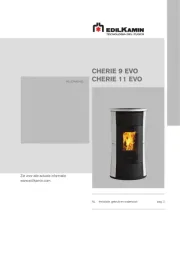
31 Augustus 2025
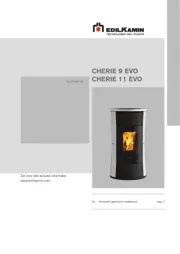
31 Augustus 2025
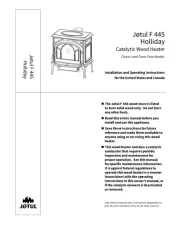
22 Augustus 2025
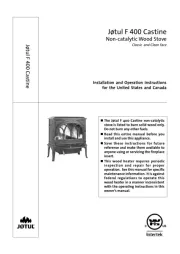
21 Augustus 2025
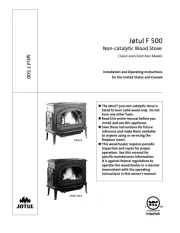
21 Augustus 2025
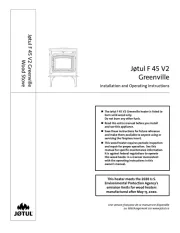
21 Augustus 2025
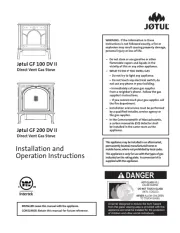
20 Augustus 2025
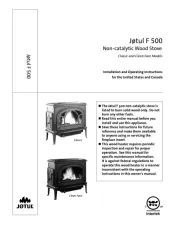
20 Augustus 2025
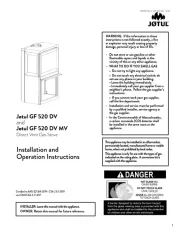
20 Augustus 2025
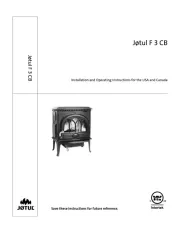
20 Augustus 2025